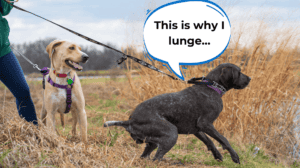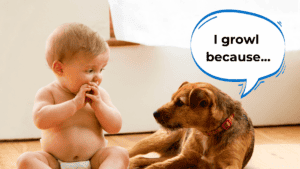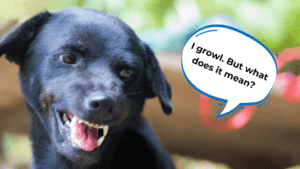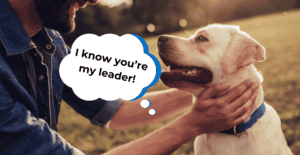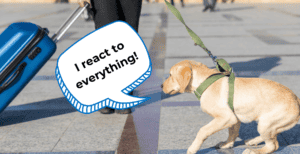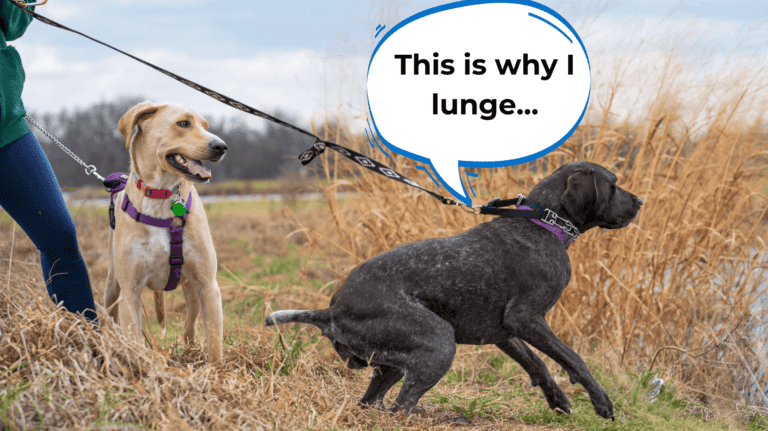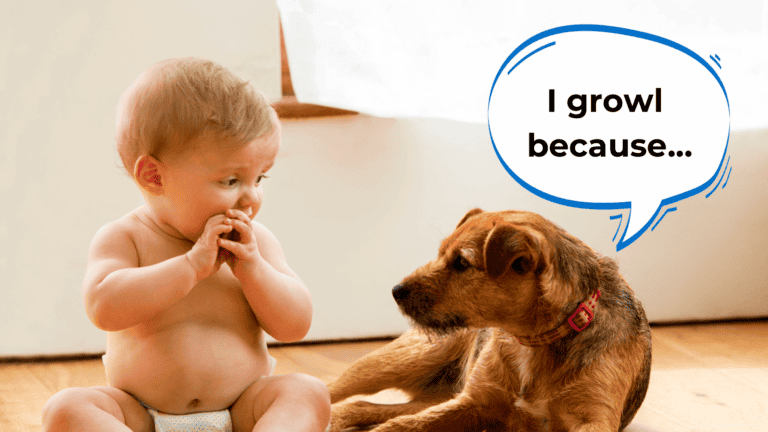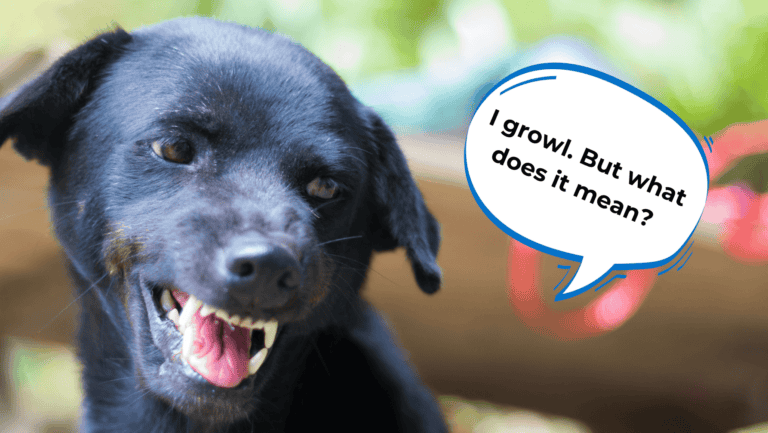Listen above or: iTunes / Spotify (Tap the subscribe button – it’s free and keeps you updated!)
Today’s Guest
Amanda Matoske:
I’m so excited to introduce to you today’s guest, Amanda Matoske, a kind, gentle dog trainer that has based her training career on the incredible teachings of dog training legend, Kevin Behan.
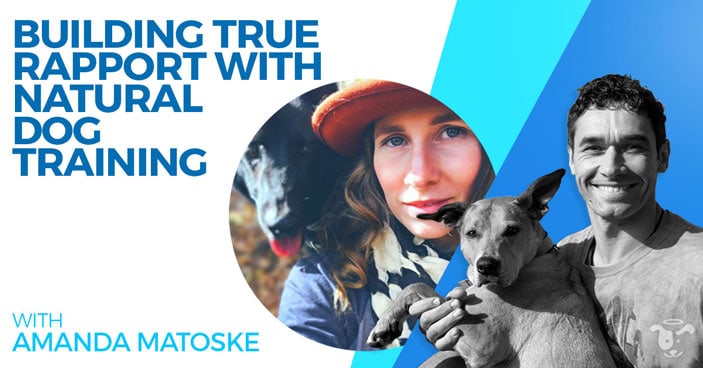
In 2014, Amanda read Kevin’s book, Your Dog Is Your Mirror, and her life was changed forever. Since that time, she's trained under Kevin and his apprentices, utilizing their mentorship to learn the art of building true rapport with any dog.
In 2018, she left her 10 year career and committed to training dogs full time.
If you’re curious about the incredible method that Amanda uses, this is a podcast you don’t want to miss!
You’ll Hear About
- [01:00] Who is Amanda Matoske
- [03:00] How Amanda’s Approach to Training is Different
- [04:50] The Story of Kevin’s Training Approach
- [08:30] This History of Domesticated Dogs
- [10:50] Kevin’s Training Theory
- [11:40] Push Training Tactic
- [18:00] Collecting Exercise
- [22:00] Speak Training Tactic
- [26:30] Protection Training Story
- [28:30] The Similarities Between Horses and Dogs
- [31:50] Rub-a-Dub Training Tactic
- [34:00] Bite and Carry Training Tactic
- [40:30] Get More Info on Natural Dog Training
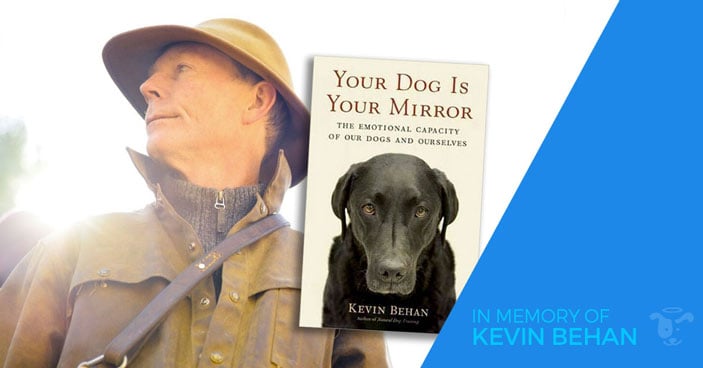
Links & Resources
- Website: https://naturaldogtraining.com/
- Natural Dog Training Study Group https://naturaldogtraining.com/studygroup/join/
- Facebook: http://facebook.com/naturaldogtraining
- Instagram: http://instagram.com/naturaldogtraining
- Twitter: http://twitter.com/naturaldog
- YouTube: https://www.youtube.com/user/quantumcanine
- Book: Your Dog is Your Mirror
Learn more by tuning into the podcast!
Thanks for listening—and again, don’t forget to subscribe to the show on iTunes / Spotify to get automatic updates.
Cheers,

~Doggy Dan
|
Amanda Matoske: (00:00) |
He was working with his father and Kevin's job was to be the boogeyman. Kevin actually built a strong connection with his dog and being the intruder, the dog was very focused on him, very connected to him. And the best part about it was that Kevin really felt a true bond with this specific dog. But the problem became that every time he would enter the home, the dog would do exactly what it was supposed to do, which was to bite him. Again, he was in a protective bite suit, he would not release Kevin on his father's command. So when the dog wouldn't release, Kevin's father told him to hit the dog with a training baton. |
|
Amanda Matoske: (00:41) |
Kevin, in that moment, just felt so disconnected as he did what his dad said and hit him to get him to release the bite toy. And he just had this feeling of, here I had this great relationship, this true connection with this dog and it felt so wrong to use that force. So he really took a step back in that moment and sat down and thought about what it was he was doing, his father's model, and really started to question a lot of things at that point. |
|
Voiceover: (01:14) |
Welcome to the Doggy Dan Podcast Show, helping you unleash the greatness within your dog. |
|
Doggy Dan: (01:25) |
Hello and welcome everybody to another Doggy Dan Podcast and today, as always I'm super excited, we have a wonderful lady with us, Amanda Matoske, who is a natural dog training practitioner. In 2014, she read Kevin Behan's book, Your Dog Is Your Mirror, which was recommended to her by her trainer, rising canine dog trainer. And his unique training model changed her life forever. Since that time, she's trained under Kevin and his apprentices, utilizing their mentorship to learn the art of building true rapport with any dog. In 2018, she left her 10 year career and committed to training dogs full time. |
|
Doggy Dan: (02:12) |
She's currently in the process of designing and opening a dog park and resort modeled after the principles of the natural dog training model put together by Kevin Behan. Amanda, welcome to the Doggy Dan Podcast. |
|
Amanda Matoske: (02:26) |
Hi Dan, thank you for having me. I'm excited to be here. |
|
Doggy Dan: (02:30) |
Yeah, well, great to have you on the podcast. We were hoping to have Kevin on the podcast. But for those of you who don't know Kevin, sadly passed away in early 2020. So, Amanda who's a practitioner and studied under Kevin, is more than happy to share with us the phenomenal method that Kevin brought to planet earth. Are you happy to just jump straight in and tell us what you love about Kevin's method? I've read his book and I love his approach. But I'd love to hear it from your mouth, what you loved about it. |
|
Amanda Matoske: (03:09) |
Of course. The biggest thing that jumped out at me and that really pulled on my heartstrings was his approach was so different than any other training model I had read about. Essentially, he doesn't just focus on the surface level of how do I change my dog's behavior to fit what I'm looking for? How do I adjust the dog's behavior? He actually dives really deep in and says, he asks deeper questions, why would my dog want to perform this behavior? Is my dog working with me, or am I just controlling him and making him do what I want? Or are we a team? Are we in this together? Is this a real relationship with my dog? |
|
Amanda Matoske: (04:01) |
I always wanted the relationship. So that's what really connected me to Kevin's work. And of course I was always very interested in behavior. I studied human psychology, and I just found a lot of the answers to the questions that I had about both human and dog behavior in Kevin's work. |
|
Doggy Dan: (04:22) |
Totally. 100%. Thank you for that. Yeah, I couldn't agree more, I couldn't agree more with what you've said then. Recently I've been chatting to a lot of people who have been saying, do we just… exactly that? Do we just want to control these dogs in any way possible? And are we wanting to really learn from them as much as control them? I think that's where Kevin was coming from. Can you share a little bit, maybe a story or an example of the stuff that Kevin used to share with you or show you? |
|
Amanda Matoske: (04:56) |
Yeah, I'd love to share actually a story that I got to hear from him a bunch of times. It was early in his career, he was working for his father who ... John Behan who actually was a war dog trainer in World War II. He also trained the Macy's guard dogs for the Macy's in New York City, and he basically was one of the pioneers of bringing dog training to the commercial scene, especially in America as far as selling it like a commodity. And training before then wasn't really we had working dogs, they were trained for specific purposes, but there was just starting to be that transition of dogs moving into the true domestic household that we see now a lot of, as opposed to the working dog. |
|
Amanda Matoske: (05:46) |
So he was working for his father, and his father used dominance or force training as was pretty much the- |
|
Doggy Dan: (05:55) |
The standard. |
|
Amanda Matoske: (05:77) |
Back in the day ... Yes, the standard, thank you. |
|
Doggy Dan: (06:00) |
That was the gold standard back then. |
|
Amanda Matoske: (06:04) |
Yes. Spare the rod spoil the dog I guess, could certainly be a catchphrase from then. So, he was working with his father and he had a moment when he was working with a specific dog, the dog ... he wasn't good at outing the bite toy. So an example would be Kevin's job was to be the boogeyman. So his father would have one of the German Shepherd protection dogs inside the house, and Kevin's job would be to make noise, rile him up, and basically be the intruder. So, Kevin actually built a strong connection with this dog and being the intruder, the dog was very focused on him, very connected to him. |
|
Amanda Matoske: (06:53) |
The best part about it was that Kevin really felt a true bond with this specific dog. But the problem became that every time he would enter the building, enter the home, and the dog would do exactly what it was supposed to do, which was to bite him. Again, he was in a protective bite suit, he would not release Kevin on his father's command. So of course we can see why this would be a problem in a trained protection dog. You want the dog to release on command when there's no longer a threat of danger. |
|
Amanda Matoske: (07:27) |
So when the dog wouldn't release, Kevin's father told him to hit the dog with a training baton. And Kevin in that moment just felt so disconnected as he did what his dad said and hit him to get him to release the bite toy, and he just had this feeling of, here I had this great relationship, this true connection with this dog and it felt so wrong to use that kind of force and use a method like that to get it to cooperate. So he really took a step back in that moment and sat down and thought about what it was he was doing, his father's model and really started to question a lot of things at that point. |
|
Doggy Dan: (08:14) |
Yeah. So, can you give us an example of the things that Kevin used to encourage his students, yourself included? It must have been wonderful being with Kevin and learning from the great man himself. What stuff did he actually say to you? This is how we need to be working with dogs, what sort of stuff was it? |
|
Amanda Matoske: (08:36) |
So, at a lot of his row conferences or even just sitting around his farm kitchen table in Vermont, one thing that would always come up or that he liked to talk about was how the relationship between dog and man evolved. And that was a really big focus of him and of his work is, what really motivated us to come together. How did dog become man's best friend? So what he would talk about or how he would explain is, thousands of years ago and they're discovering even more recently I think the highest year count is up to 50,000 years ago, they have domesticated dogs. |
|
Amanda Matoske: (09:21) |
So what he was able to decipher in his own research, was that dogs are essentially wolves that chose to hunt with men. We both have this problem of, okay we're putting in all this work to take these prey animals down, but if we work together, we can actually take down more and bigger prey. Wolves were already doing this by hunting in packs. They already understood this concept and man was pretty successful in doing the same. The larger group that you hunted with, the bigger prey animal you can bring down, the longer you can feed your tribe or your community. So, knowing or understanding that that's how we originally connected, was really important to how he developed his training method and model. |
|
Amanda Matoske: (10:17) |
Understanding that we came together and chose to be social and work together and organize together around the hunt. That was very important, was the hunt. |
|
Doggy Dan: (10:27) |
Yeah, a team approach to things rather than one bossing the other one around I guess. |
|
Amanda Matoske: (10:35) |
Exactly, yeah. |
|
Doggy Dan: (10:36) |
So, can you give us an example maybe of where Kevin said, "This is how you could do it. But this is the way we like to go about it." Or an actual practical tip or technique that the listeners could put into place or try? |
|
Amanda Matoske: (10:51) |
Of course. So, after the incident with his father, the first thing he did was go and watch dogs play together, he spent a lot of time just quietly observing dogs and how they move together. And he developed what he called or end up calling the five core exercises. So these actually aren't really discussed that much in Your Dog Is Your Mirror. So much as the overall theory. But this is the practical hands-on method that he taught me and his other apprentices and other owners of how to fix any underlying issue that the dog was having. If a client comes to Kevin, or would come to Kevin come to me, and say, "My dog is destroying my couch when I go to work." |
|
Amanda Matoske: (11:42) |
Or, "My dog is barking and lunging at other dogs when we're out on a walk." Or, "My dog is getting aggressive with humans, he's starting to bite humans, he seems very fearful." No matter what the behavioral issue was, the method was always the same. And that was to work with your dog with the five core exercises. And I'll give an example. So like the first exercise was called Pushing. And what Pushing is, is essentially a way to hand feed your dog. So we're taking the food out of the bowl, we're hand feeding with our dog, and we're trying to actually mimic what it felt like those thousands of years ago to hunt together. |
|
Amanda Matoske: (12:25) |
Because again, we're now dealing with domesticated dogs that they have no job, they don't work together with us to accomplish a goal anymore. They're just there when we get home and we love that about them, they're definitely emotionally supportive animals. But we no longer have that tactile feeling and practice with them, where we're actually moving and conquering some goal together. |
|
Doggy Dan: (12:54) |
They certainly don't help us to gather the groceries, that's for sure. |
|
Amanda Matoske: (13:00) |
Yeah I have seen a couple of funny TikToker or Facebook videos of dogs helping with shopping and getting things out of the fridge and such, but nothing compared to what they used to be able to do. So the Pushing technique is the hand feeding. It's almost like what a trust fall would feel like with your dog, but from your dog's perspective. So, when a human does a trust fall, they turn their back, and they just trust that the persons or people behind them are going to catch them. So you have to be vulnerable in that situation. |
|
Amanda Matoske: (13:41) |
For a dog, when a dog is eating, especially when it's hand feeding, as soon as its mouth is occupied, it's vulnerable, it's no longer able to defend itself. So, with the Push exercise, you're asking your dog to trust you and to give you its energy and move this energy inside of it with you, all while trusting that it's perfectly safe and that you can catch it so to speak. |
|
Doggy Dan: (14:24) |
I get the gist of it. |
|
Amanda Matoske: (14:28) |
Yeah, I'll definitely do that. But basically the reason it's called the Push is because the dog is actually pushing into you to get to that food in your hand. So you can use your leg or your other arm and you're basically putting it out as an obstacle that the dog has to lean into, almost to the point of actually ... the goal would be to get the front paws even off the ground as it's eating the food out of the feeding hand. So you even get to the point where, usually dogs who have anxiety issues or they are nervous around strangers, they have a very hard time doing this and they don't necessarily lean that far in. |
|
Amanda Matoske: (15:10) |
So over time you really get them to where they're even pushing you across the lawn or across the rooms to get to that food and that other hand. And it seems very benign like, "Okay, so my dog can push me across the room and eat food on my hand. How does that help my dog? How does that help my situation?" And it's doing a lot of different things, so it's allowing your dog to feel like it's hunting with you, it's getting that feeling that tactile touch of moving, physically moving energy with you. Then on another landscape it's exercising that trust muscle that the dog is learning to trust and that it can lean into the human and it can trust being vulnerable with a human. |
|
Amanda Matoske: (15:52) |
Then you also have the final piece besides just the moving, the energy and pushing and trusting, you're actually building attraction to your dog so if your dog is nervous or shy especially around strangers, we are a predatory force, we walk upright, we have big eyes, we have big teeth we might not be a mastodon or a lion or anything like that but we are a very predatory energy in nature. We're at the near top of the food chain in most places I would say, I wouldn't be in the jungle but I definitely am in the supermarket. So, the dog, we're asking a lot of them ... even when we call their name for them to come over to us. |
|
Amanda Matoske: (16:40) |
We think it's so ... we take it for granted that the dog can just come running over and it's actually very hard for them to approach a human. Again, you see it more in the wolves that's why we're not domesticating wolves, but dogs obviously chose way back in the day they were the wolves who said, "You know what, I'm going to hang out with that guy. They seem pretty strong and they're pretty predatory but I think I can run with them. I think I can, you know, make this work." So now that we don't have that connection and we don't work together over that common goal, we're starting to see a recession. |
|
Amanda Matoske: (17:25) |
Dogs are more and more timid around humans, are more and more timid with their owner and the recall is just going out the window. So, when you're asking your dog to come back when called, you've got to take into account it's not that they're just distracted or they just don't want to come, a lot of times it's just hard because you are a predator and they feel like prey when they're around you, and so to come that close and to trust that they are safe with you is a big deal. |
|
Doggy Dan: (17:55) |
So that exercise, that's what that exercise can really build in the dogs. What about the other four? Don't go into them, I don't need to give away all of your tips but can you just touch on what they are, are they to do with for example walking the dog or? |
|
Amanda Matoske: (18:09) |
Of course. |
|
Doggy Dan: (18:10) |
... connecting with the dog or? |
|
Amanda Matoske: (18:11) |
Yep. So that one is Pushing and obviously it plays in a lot to recall and different things like that, confidence. Then you have the Collecting exercise which is the equal opposite of the Push, and that is where basically the dog learns what we would consider to be impulse control. It's learning how to maintain its energy or collect its energy in its hind end, in a backward way. So almost as if by being still and relaxed, you're willing the ... what you want to come to you. The law of attraction is brought up a lot of times when we discuss this, and while it's not the same, it is similar if you understand the law of attraction which is, if you just are relaxed, calm, confident you know what you want, the things will come to you. |
|
Amanda Matoske: (18:59) |
So, in this modern day in our society, even human collecting is not very much encouraged. If you want something you have to go get it, you have to work for it, you have to do something. You can't just sit back and things are just delivered to you, that's not how the world works. But unfortunately if with a dog if you are constantly rewarding them doing something, and you're not rewarding them when they are relaxed and calm, you're sending the message that okay you have to be up and going and moving and doing something if you want my attention, if you want to treat. |
|
Amanda Matoske: (19:35) |
You have to be doing a paw, you have to be running around in a circle, you have to be sitting, staying ... all these different tricks for treats. But, how does the dog know or when the dog feels… to relax like everything ... the energy in the house is coming down. It's time for a Netflix movie and we're going to be going to sleep but your dog doesn't know how to do that, it's like, "Wait a minute, I don't get rewarded for relaxing. I don't get rewarded for just chilling out and doing nothing." So a lot of dogs become neurotic, they become obsessed with when things stop moving, they don't know what to do with themselves. |
|
Amanda Matoske: (20:16) |
They don't know how to feel good in that. So a lot of dogs who have separation anxiety or they just have a really hard time focusing on their owner, especially around distractions, then they need a lot of Collecting, they need that collecting muscle to be exercised and learn that it's not always I have to go get it. I also can just sit back and let it come to me awesome. |
|
Doggy Dan: (20:40) |
Awesome. |
|
Amanda Matoske: (20:41) |
So you want to be able to do both, you want to be a go-getter but also be able to chill and let things come to you as well. |
|
Doggy Dan: (20:47) |
Sounds like training my children. I very often ... I notice when they've done really well and they're calmly getting on with their work or my son's doing his Lego and I go up to him and I say, "Stan this is really cool that you're involved in this project and you just getting on and doing." And then I'll say to him, "Would you like me to bring you some stuff, some pancakes?" It's literally, subtly without him probably even realizing I'm rewarding him for just being in his own space, holding his own project together and I'll bring him some pancakes and he'll sit and eat them and he'll think he's the luckiest boy in the world. |
|
Doggy Dan: (21:25) |
The same thing with the dogs, they're lying by the fire quietly, the two boys lying next to each other. And I'll just bring them up completely out the blue. It doesn't happen that often. But I'll just bring them a couple of little biscuits. And, "There you go boys." And they'll just go, "What?" We get this just for lying in front of the fire together calmly. |
|
Amanda Matoske: (21:44) |
Exactly. |
|
Doggy Dan: (21:45) |
Yep, that's it. That's how it works. I totally get it. Are you able to touch on the other three very briefly? Do you mind? |
|
Amanda Matoske: (21:52) |
Yeah. |
|
Doggy Dan: (21:53) |
Just to tease people, just that those people go, "Oh, well, this sounds great. I want to know more." And then we'll tell people where they can really find out all about it if they're interested. |
|
Amanda Matoske: (22:03) |
Of course. So the third exercise would be the Speak, and it's basically breath work for your dog. If anybody's ever done a breath class, a perfect example would be somebody breathing, having an anxiety attack and huffing and puffing away like and somebody hands them that paper bag and goes, "Just take a deep breath. Concentrate on your breath, catch your breath, take a deep breath." How do you communicate that to a dog? A lot of our dog's behavioral issues stem around your dog essentially having a panic attack, it's going into that the polyvagal ... I believe it's the sympathetic nervous system where it's becoming a survival mode. |
|
Amanda Matoske: (22:44) |
How do you get it out of that? How do you get it to come back down and get it back into the parasympathetic to where it can actually negotiate those social situations? So with the Speak, you're essentially just teaching it how to take a nice, deep breath and with a dog that is generally a bark, a nice deep metered bark. |
|
Doggy Dan: (23:05) |
Yeah. |
|
Amanda Matoske: (23:08) |
They call some people, chest breathers or mouth breathers. You want your dog taking that nice big breath from its diaphragm. You want a nice deep bark. You're not looking for those crazy reactive barks, those up yappy dogs that they say. |
|
Doggy Dan: (23:25) |
No. |
|
Amanda Matoske: (23:27) |
You want your dog to be able to do just a nice metered bark. |
|
Doggy Dan: (23:31) |
My dog is the best at this. He's called Jack and he's a very confident, powerful dog. He's part Catahoula, and he's got the biggest chest and he does the biggest but he will do that whilst he's lying on his side, on a couch. Looking at the gate, where there's a person who's about to come through the gate. And has a huge booming bark because he's got a huge chest, good breathing, good lungs. And he's warning them saying, "Hey, don't mess around." But yeah, I can't be bothered to get off the couch. |
|
Amanda Matoske: (24:03) |
I was going to say, I bet you with that nice deep metered bark, he has no need to move or he's very confident, I let him know, I'm connected with him. He knows that I know. And I'm able to remain calm. Yeah. |
|
Doggy Dan: (24:17) |
Yeah, I know. I'm here. It's exactly ... The guy says, "God I love your dog. He barked at me but he couldn't get off the couch." It's like, yeah, he knows, he knows that you know and you know that he knows that ... we've made it very clear, don't mess around. You can come through the gate but behave. |
|
Amanda Matoske: (24:35) |
Yeah. Kevin would say that dogs that get the reactive barking the FedEx guy or the person out the window, the problem becomes that again, they can't feel ... they get disconnected from their body. They see the person coming up and they don't feel that confidence of like, I can stay in my body. I can stay in this space and be safe and comfortable. I don't have to get up and run and bark ... reactive bark or trying to attack him, I feel especially by giving a booth like that, by being able to have that breath, he feels totally ... Kevin prefers to say feel versus no. He would always contest that, in fact, it's what got him in a lot of trouble in the beginning with the scientific community is, he would postulate that dogs don't think. |
|
Amanda Matoske: (25:28) |
They go by feel, they're not like us, they don't have that highly developed prefrontal cortex, their system is designed to feel and it doesn't mean they're not intelligent, they're very intelligent, they go by feel, and I would say it's actually an even ... most dogs, I wish I could tap into that. I would know a lot more and I would probably navigate the world a lot better if I was able to go more by feel like they do. |
|
Doggy Dan: (26:00) |
Yeah, instinct and intuition is so powerful, it's so underrated, it's so not talked about. But if you actually speak to a lot of the top CEOs, that's what they're going off. |
|
Amanda Matoske: (26:10) |
Yep. |
|
Doggy Dan: (26:12) |
People who are at the top of their game, they're going off of feeling. They're not relying anymore on what the CV says, CV of somebody may say this and then that but ... when you're trying to employ somebody for a really tough job, and your gut is just saying, this person's the right one. A lot of people say go this, go with your gut instinct, go with your instinct. Go with what you're feeling. |
|
Amanda Matoske: (26:39) |
Oh, that's perfect. I have a beautiful Kevin story for that. |
|
Doggy Dan: (26:44) |
Yeah, share it. |
|
Amanda Matoske: (26:47) |
Yeah, it's a quick enough one here. So, Kevin, he did eventually go back into training protection dogs again, but he used his method versus his dad. And he had this one German Shepherd that he trained for a really ... I forget what his actual job was, I believe what he was in finances. And he was in Connecticut. And basically the dog was raised by Kevin, when he was a puppy and then given to the owner as a protection dog. So the owner called him up one day and said, "Kevin, we need to set up a lesson, something really strange happened." I forget the dog's name, but his dog had essentially become reactive and aggressive with somebody who had come to his door, a new business colleague. |
|
Amanda Matoske: (27:38) |
Kevin was like, "Well, that's odd. But of course, yes, let's set up the lesson." So they set it for a week or two down the road. In the meantime, he ended up getting another call from the same owner, and the owner said, "Nevermind, forget it, the dog was doing exactly what it was supposed to do." And what had happened was this owner was actually having a lot of doubts about this new business partner, and something didn't quite sit well with him. And of course, the dog was picking up on that and reacted to that when the guy got to the door, he basically was expressing the owner's intuition and the owner’s gut feeling about this person. |
|
Amanda Matoske: (28:16) |
It turned out they were both spot on, the gentleman, the business partner did end up being a shady con man that he wanted no business with at all. So, he canceled the lesson and he said, "Nope the dog is doing perfect work. I think I'm completely satisfied." |
|
Doggy Dan: (28:35) |
My wife works a lot with horses. And she often says ... and this is stuff she's experienced herself and also stuff she's learned from some of the top trainers reading books, and working with some of the top trainers in the world is the horse ... And I'm sure the dog is similar. The horse can't stand that incongruence, where you are maybe trying to act a certain way, but you're feeling something totally different. |
|
Amanda Matoske: (29:03) |
Yeah. |
|
Doggy Dan: (29:03) |
She says that's horses. When you're faking it, the horse goes, "You're faking it. You're a fake." |
|
Amanda Matoske: (29:09) |
Exactly. Yeah. |
|
Doggy Dan: (29:10) |
So their instincts and intuition go, it might be that your heart is absolutely racing and you're scared and you're sweating, the horse goes, "You're scared, you're nervous, but you're trying to act all calm, and I can tell them." And I'm sure dogs are similar to a degree, they just can see there's ... Yeah. |
|
Amanda Matoske: (29:27) |
Well, so dogs and horses are one of the two animals that evolved with us for a long period of time. And Kevin would agree. Yeah, dogs and horses are very, very similar. Essentially what dogs are acting on most of the time especially when their behavior does not match up to the ... Anytime your dog does something you're like, "What? Like, why did he do that?" It's generally because the dog is not listening to what you're saying, what you're speaking, the dog is listening to what's going on inside. So if you have that incongruence, they will act upon it. In fact, Kevin would say that's their job is to bring that to the surface and to make you aware of this disconnect between your brain and your body and your heart and that intelligence of your intuition. |
|
Doggy Dan: (30:16) |
Sometimes I think it's so subtle that we don't even realize what we've done. But the dog can tell it may be our heart rate's changed and our breathing has changed or we've tightened the [inaudible 00:30:27] contents, but the dog can spot it. And that's the real genius ... I once had a video ... I remember watching a video that I've captured once about a lady who was saying her dogs are always reactive. And we caught it on camera. And what happened was as she was walking down the road, she would always tense. And what happened was, you can see the tiniest of the tension in her wrist just as she starts to walk past the dog that we were practicing with. |
|
Doggy Dan: (31:02) |
And up to that point, the dog was fine. But the second her hand tensed on that leash, the dog felt it and the dog just reacted and she didn't even realize she'd done it until we watched the replay video so, they feel everything. |
|
Amanda Matoske: (31:17) |
Right yeah, no, they're usually very ... and myself included. I learned a lot when I started this process with my own dogs. They call them blind spots, or Kevin would call them blind spots. You need another person to see it, it's not something that you can see on your own, you need another, you need a dog, you need a person, a horse, you need something to show you or to express what you can't see yourself. |
|
Doggy Dan: (31:42) |
You need a mirror. |
|
Amanda Matoske: (31:43) |
Yes, exactly. |
|
Doggy Dan: (31:45) |
The dog is your mirror. |
|
Amanda Matoske: (31:46) |
Exactly. |
|
Doggy Dan: (31:48) |
So, are you happy to touch on the other two, we've gone through three. It's great? |
|
Amanda Matoske: (31:51) |
Yep. |
|
Doggy Dan: (31:51) |
Two more, this is brilliant. |
|
Amanda Matoske: (31:54) |
So the fourth exercise would be called the Rub-a-Dub. And this is actually more of a massage technique. I actually had a lesson today where we went over this and the owner was just so excited because it's not just about, "Okay, this is how you pet or touch your dog." You do it in a specific way. But part of it is really tuning into your dog's body language and what kind of touching they like and I usually assign them again, given their capacity some owners I tell them they have to go week without petting their dog, they can't instigate the petting, their dog has to be the one to initiate it, their dog has to come over and lean into them and "request the petting". |
|
Amanda Matoske: (32:39) |
Some owners I can tell it's going to be a hard sell so I tell them, try three days of it. But really, it's more about becoming aware of the dog's autonomy and what the dog is comfortable with. Really getting them to pay attention to, "Okay, how much does my dog like being pet?" Is it coming over all the time? Or am I the one that's constantly going over to it and touching it and again, it's not wrong to want to pet your dog. But it is cool to get a baseline and see where they're at and where their comfort zone is, of being touched. |
|
Doggy Dan: (33:17) |
A little bit of respect, both ways. |
|
Amanda Matoske: (33:17) |
Yes. |
|
Doggy Dan: (33:17) |
So this is very much sounds like a connection, real connection and respect and learning sensitivity and awareness. Is that right? |
|
Amanda Matoske: (33:23) |
Yeah, exactly. It does also coincide with the Vagus Nerve, the way that you massage the dog, you're doing from its cheeks, its jaws down to its shoulders and then back down the spine and then you generally do it up and down, again gauging the dog's comfort level. And the goal would be to get the dog so relaxed and activate the, tone the polyvagal tone to where the dog literally just rolls over in rapture. It's so calm and relaxed, it's so chilled out. |
|
Doggy Dan: (33:59) |
Beautiful. Love it. I'm just picturing my big dog Jack who just ... He's got a head like a rock and he just loves that head massage, behind his ears on the top of his skull. He's got these pointy gnarly, bony bits on his skull he just loves it being really pushed really hard he goes all floppy so. |
|
Amanda Matoske: (34:20) |
Yeah. |
|
Doggy Dan: (34:21) |
Let's give him a message when I'm done. Brilliant and the fifth exercise. |
|
Amanda Matoske: (34:26) |
Alright, the fifth exercise is called the Bite and Carry. Now, all of them really work off the hunting instincts, the prey drive, but this is the real exercise that feels like you just went out and hunted with your dog. And essentially it's you use a tug toy or a bite toy. Some of them like bite pillows or a tug rope. And the goal is to, A, the dog gets to feel like it wins. So it's really important that when you go out and you play tug and I know this is very opposite of what a lot of trainers back in the day would say, total equal opposite where normally they would tell you, you have to make sure you win so it knows who's in control and who's in charge. |
|
Amanda Matoske: (35:10) |
But, as Kevin's model would postulate, it's about if you want a confident dog that's calm and relaxed and can navigate social situations, you don't want them to be fearful, you want them to be confident in themselves. |
|
Doggy Dan: (35:25) |
My wife and I often joke about the game I don't know if you have it in America called Pass the Parcel, we pass it round and round, and you take off a layer of wrapper, and at the end somebody wins the prize. And my wife and I often joke that that trains you in the art of disappointment. |
|
Amanda Matoske: (35:41) |
No, we don't have that game. That sounds fun. |
|
Doggy Dan: (35:45) |
Oh, it's dreadful. It's a horrible game. I'm glad you don't have it. But, it reminds me of that, when the dog always loses, it's like, let me train you in the art of being disappointed and get used to it because it happens all the time. It's like, No, that's not ... Yeah, let the dog win and ... Yeah, as long as you can eventually call the dog over and let it give you the toy back then ... yeah, where's the problem? |
|
Amanda Matoske: (36:03) |
Right. And in the end it becomes a mutual thing. So you tug with the dog, you let it win and then you encourage it to bring the toy back over and push it into you for more tugging. So it's, you're working with the dog and it's the difference between this game and all the other games, the fetch game, the many wrestling with your dog, it feels like, by doing it in the way that Kevin developed, it feels like you and the dog just went out like it felt 50,000 years ago and hunted together and brought home ... it's called the Bite and Carry, you do the tug, the dog wins the tug. But then eventually you end up carrying the tug together, you carry the toy together. |
|
Doggy Dan: (36:48) |
Beautiful. |
|
Amanda Matoske: (36:49) |
Back to the house or in a circle or wherever you're at, you just get the feeling of carrying it together of winning it together. It's really important because, again, we've taken these animals who, way back in the day, were like, "Yeah, I want to hang out with that guy. I want to catch prey with that guy." And then we have totally ... it feels like we've completely forgotten their history and what they've evolved to do. Yes, they're cute, cuddly dogs, and they are great emotional support animal they're great like that and they're our best friend but, what about those instincts and drives? |
|
Amanda Matoske: (37:22) |
They still come from wolves, we still have to give them that. And if we don't give them an outlet like that, then they're going to find one. As a dog trainer, it's usually something that I'm called for, my dog is eating my couch or my dog is fighting with other dogs or my dog is getting aggressive with humans. The dog that is doing that has essentially found a hunt, a way to get those hunt instincts, those prey drives and work with them. But usually it's not congruent, it's not efficient or effective in the human world. So it causes a lot of friction, and it causes a lot of tension between dogs and their owners. |
|
Amanda Matoske: (38:03) |
This bite and carry game really just answers the question for both of them. Your dog is saying, "What do I do with this energy? What do I do with these instincts? What do I do with all this drive?" I don't know what to do with it. And this game, it gives them the answer and it doesn't just give them any answer, it's the difference between a gas station instant coffee and a Starbucks coffee. They feel the difference. They may have chosen to let it out on a couch, and they're constantly tearing up furniture or destroying their blanket or toys or whatever, but it never feels ... it works. |
|
Amanda Matoske: (38:41) |
It addresses the problem, it releases some of the built up drive in them, but it never actually solves the problem like the Bite and Carry, it doesn't feel as good. So when you start playing this game, it starts siphoning that energy that they're putting into all those problem behaviors into the game instead and they start saving it and going, "Oh yeah, no, I see the mailman is coming up the driveway today, but I'm not hunting the mailman anymore. I'm saving it for Bite and Carry with dad." |
|
Doggy Dan: (39:09) |
Yeah. |
|
Amanda Matoske: (39:09) |
That's what I'm going to put it into. |
|
Doggy Dan: (39:11) |
It works with the nature of the dog. That's what I love about the- |
|
Amanda Matoske: (39:16) |
Exactly. |
|
Doggy Dan: (39:16) |
So, Your Dog Is Your Mirror. It's a beautiful book. It's a beautiful place to start. But also you have your own training program and facility that you're setting up. Amanda, are you happy to share a little bit more about yourself and where people can find out about you or where they can find out more about this method, whatever you'd like to ... People who are interested in finding out more, where should they go next? |
|
Amanda Matoske: (39:40) |
Well, if you're interested in finding out more about natural dog training, I can't stress enough besides the book, Kevin does have a website still set up where he has also written a ton of blogs. You can dive as deep as you want into this method. A lot of his apprentices, me included, feel that what Kevin has developed is ... it is a training model and it is his way to build rapport with dogs. But it goes beyond that. Like I said, I used to study human psychology and his theory of behavior, does apply to humans. So yeah, if you're really interested in diving a lot more deeper into the theory, I highly encourage you to visit his website naturaldogtraining.com and reading any of his hundreds of blog posts. |
|
Amanda Matoske: (40:34) |
Definitely be ready to dig in. He likes to use highly intellectual language, but it's worth the read for sure. |
|
Doggy Dan: (40:44) |
Beautiful. |
|
Amanda Matoske: (40:45) |
If you're looking for more practical help, more training help, then I definitely encourage you to join the Natural Dog Training Study group, where I and a lot of his apprentices are actively giving advice and helping owners with training questions, model questions. If you want to know more about how to do natural dog training with your dog and apply it, that is a much more practical resource. So I highly encourage that. |
|
Doggy Dan: (41:14) |
Where can they find that? |
|
Amanda Matoske: (41:16) |
So there is a link right on his website naturaldogtraining.com and I do believe I shared the link with you so you can put it on- |
|
Doggy Dan: (41:23) |
Yeah, I think it's just /studygroup. |
|
Amanda Matoske: (41:25) |
Yeah. |
|
Doggy Dan: (41:26) |
So I'll add all those links onto the page. If you're listening to this then ... if so, all of this will be transcribed, this podcast will be on my website, which is the onlinedogtrainer.com/naturaldogtraining. That sounds like a wrap Amanda. It's been fascinating. It's been really, really fun. Very informative. Is there anything else you would like to share before we wrap up? |
|
Amanda Matoske: (41:51) |
No, just thank you for inviting me on this and for taking an interest in Kevin's work. I'm just happy way back in the day when I read that book and it changed my life. I knew that I wanted to make it a goal of mine to spread awareness of Kevin's model as far as wide as I can. So I'm very excited that you invited me to speak on here. So thank you so much for that opportunity. And yeah, I do enjoy also listening to some of the other podcasts that you've recorded. I had a 12 hour drive the other day that I thankfully had plenty to listen to, and it's really cool what you're doing and the type of people you invite on and I really like how eclectic it is you- |
|
Doggy Dan: (42:37) |
Oh, thank you. |
|
Amanda Matoske: (42:38) |
You definitely are very diverse in your guests yeah, so I appreciate that. Keep up that. |
|
Doggy Dan: (42:43) |
Appreciate it. Thank you so much. So, in memory and in honor of Kevin Behan, thank you so much for being here, and thank you Kevin for your beautiful work for the book Your Dog Is Your Mirror for the natural dog training method that you brought to planet earth. So, that's it guys. You've been listening to another edition of the Doggy Dan Podcast show, where we believe inside every dog is a good dog and inside every good dog is a great dog. Have a great day. And love your dog. |
|
Voiceover: (43:18) |
You've been listening to another episode of the Doggy Dan Podcast Show, bringing you one step closer to creating harmony with your dog. |
Sign up to receive email updates
Enter your name and email address below and I'll send you periodic updates about the podcast.




